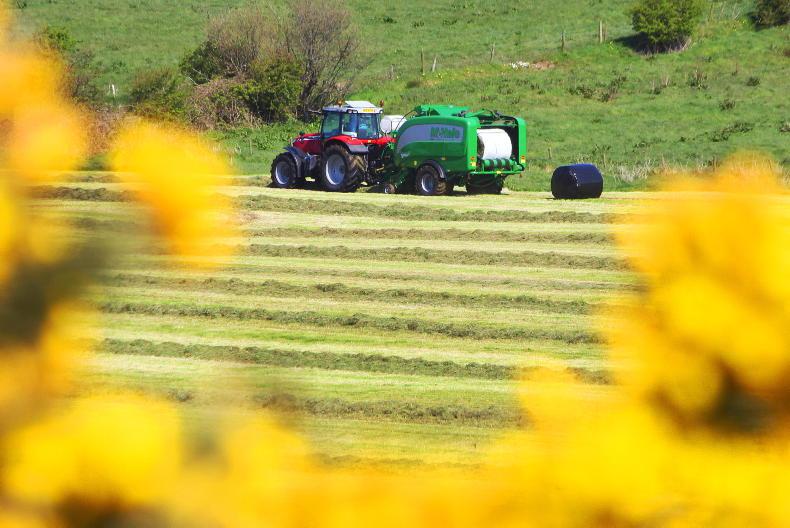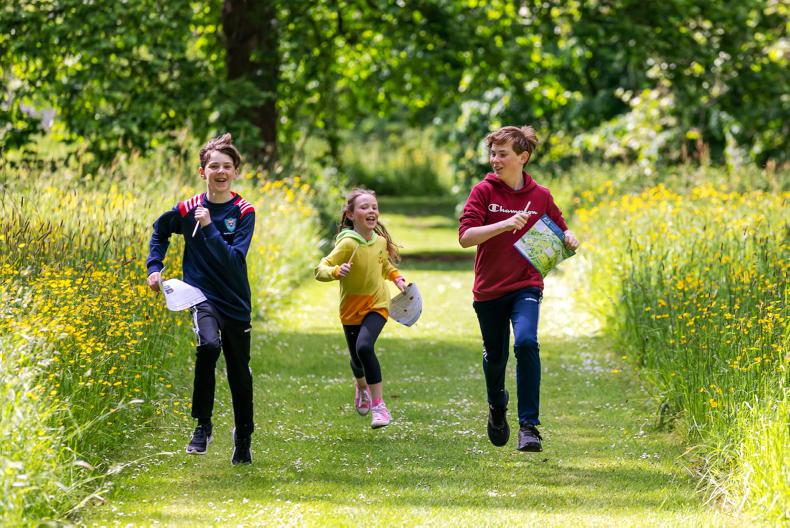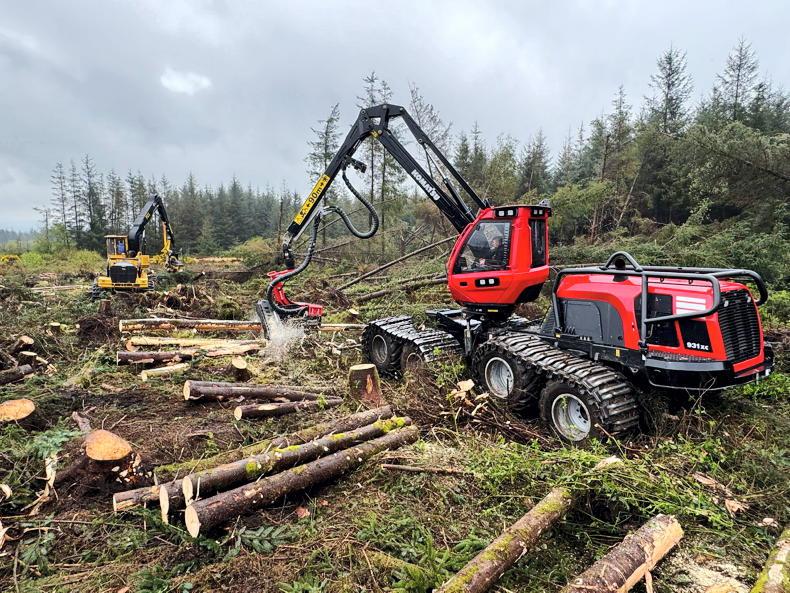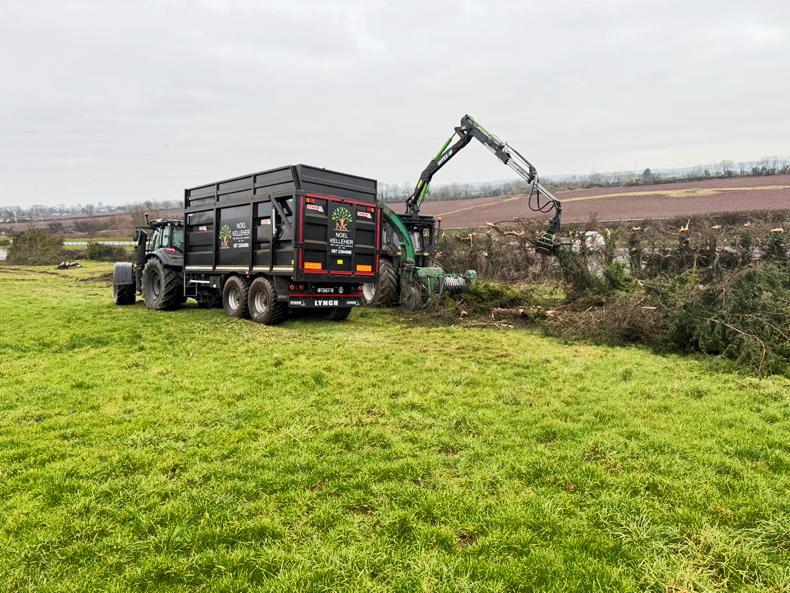May is one of my favourite months of the year. It begins with a bank holiday, which is always a good start and ends just in time for another at the start of June. In between these two holidays are weeks with gradually increasing temperatures and yes some years it can be very gradual. We often get a spell of really warm weather and we act like we live on the Costa del Connemara. We go from spending evenings watching TV after the dinner to sitting outside wearing two fleeces, getting eaten alive by midges while eating burned burgers from the barbecue.
May mornings are filled with bird song as the dawn chorus is at its peak. Later the longer evenings are perfect for walks filled with swallows flitting about high overhead and you can hear the cuckoo calling. Both the swallows and cuckoo have made the long flight here from Africa and now they need to find a mate, build a nest and raise the next generation of birds. Ok, so the cuckoo doesn’t do half that, content to do the mating bit but not the nest building or raising the kids bit. Not great parenting there! If you live in certain parts of the country like Belmullet or Inishbofin you might also hear the corncrake in the evening. Not the prettiest bird sound, the creek, creek to me sounds like a rusty door. It’s sad though to think that this once common sound has never been heard by most of today’s population.
May is a month of great growth, named after the Roman goddess Maia who is credited with growth in the garden. The spring daffodils have finished flowering and are replaced by tulips, columbines and other flowers, although the garden doesn’t get into full swing until June. If you get a chance it’s a great time to see the Spring Gentian in the Burren. It’s the flower symbol of the Burren and while quite small it is such a beautiful shade of blue you can’t miss it. Some of our native woodlands are carpeted with bluebells and the roadsides are full of primroses and cowslips. The hedgerows are full of hawthorn trees looking splendid, covered in white, sometimes tinged with pink blossoms. Not surprisingly it’s also called the May bush.

Neil McGinley of McGinley Contractors Kilmaddy Co.Antrim baling 30 acres of silage for William Chesnutt outside Portrush Co.Antrim.
It’s also a great time for grass growth. Towards the end of the month, farmers will make silage, drivers will complain about rural roads filled with trailers of cut grass or balers and wrappers and urban dwellers will wonder why farmers complain about a lack of fodder when they have to cut their grass every week. In recent years there has been a move towards No Mow May. We are encouraged to leave mowing the lawn or at least a section of it, until after May to let the dandelions and other wildflowers grow and feed the bees and other pollinators. Many local authorities have adopted this for public areas.
Although it’s a time of growth it’s also called the hungry gap as the winter vegetables are finished but many of our maincrop vegetables are still not ready to harvest. Rhubarb is the only home-grown fruit ready for harvesting in May. Yes, I know it’s technically a vegetable but we all treat it as a fruit. Even with a glasshouse or tunnel, it’s too early for carrots, peas or beans though you might be getting some early pickings of salad leaves. I can tell you there’s no shortage of slugs growing fat on a diet of fresh young growth in the garden.
It’s the month of Holy Communions with bouncy castles in front gardens. Festivals have started, some are even brave enough to plan to have them outside and the wedding season has kicked off in earnest. It’s the start of summer, a time to celebrate the grand auld stretch in the evenings and the promise of warmer, drier weather.
Whatever this month means to you may the force be with you!
Read more
Margaret Leahy: before farming, we had only foraging
Margaret Leahy: do you ask if the food is Irish when you eat out?
May is one of my favourite months of the year. It begins with a bank holiday, which is always a good start and ends just in time for another at the start of June. In between these two holidays are weeks with gradually increasing temperatures and yes some years it can be very gradual. We often get a spell of really warm weather and we act like we live on the Costa del Connemara. We go from spending evenings watching TV after the dinner to sitting outside wearing two fleeces, getting eaten alive by midges while eating burned burgers from the barbecue.
May mornings are filled with bird song as the dawn chorus is at its peak. Later the longer evenings are perfect for walks filled with swallows flitting about high overhead and you can hear the cuckoo calling. Both the swallows and cuckoo have made the long flight here from Africa and now they need to find a mate, build a nest and raise the next generation of birds. Ok, so the cuckoo doesn’t do half that, content to do the mating bit but not the nest building or raising the kids bit. Not great parenting there! If you live in certain parts of the country like Belmullet or Inishbofin you might also hear the corncrake in the evening. Not the prettiest bird sound, the creek, creek to me sounds like a rusty door. It’s sad though to think that this once common sound has never been heard by most of today’s population.
May is a month of great growth, named after the Roman goddess Maia who is credited with growth in the garden. The spring daffodils have finished flowering and are replaced by tulips, columbines and other flowers, although the garden doesn’t get into full swing until June. If you get a chance it’s a great time to see the Spring Gentian in the Burren. It’s the flower symbol of the Burren and while quite small it is such a beautiful shade of blue you can’t miss it. Some of our native woodlands are carpeted with bluebells and the roadsides are full of primroses and cowslips. The hedgerows are full of hawthorn trees looking splendid, covered in white, sometimes tinged with pink blossoms. Not surprisingly it’s also called the May bush.

Neil McGinley of McGinley Contractors Kilmaddy Co.Antrim baling 30 acres of silage for William Chesnutt outside Portrush Co.Antrim.
It’s also a great time for grass growth. Towards the end of the month, farmers will make silage, drivers will complain about rural roads filled with trailers of cut grass or balers and wrappers and urban dwellers will wonder why farmers complain about a lack of fodder when they have to cut their grass every week. In recent years there has been a move towards No Mow May. We are encouraged to leave mowing the lawn or at least a section of it, until after May to let the dandelions and other wildflowers grow and feed the bees and other pollinators. Many local authorities have adopted this for public areas.
Although it’s a time of growth it’s also called the hungry gap as the winter vegetables are finished but many of our maincrop vegetables are still not ready to harvest. Rhubarb is the only home-grown fruit ready for harvesting in May. Yes, I know it’s technically a vegetable but we all treat it as a fruit. Even with a glasshouse or tunnel, it’s too early for carrots, peas or beans though you might be getting some early pickings of salad leaves. I can tell you there’s no shortage of slugs growing fat on a diet of fresh young growth in the garden.
It’s the month of Holy Communions with bouncy castles in front gardens. Festivals have started, some are even brave enough to plan to have them outside and the wedding season has kicked off in earnest. It’s the start of summer, a time to celebrate the grand auld stretch in the evenings and the promise of warmer, drier weather.
Whatever this month means to you may the force be with you!
Read more
Margaret Leahy: before farming, we had only foraging
Margaret Leahy: do you ask if the food is Irish when you eat out?










SHARING OPTIONS